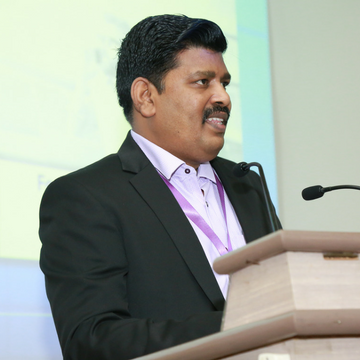Rishi Kapoor, a supply chain analyst, was interested in learning more about the triple bottom line approach and how it is implemented in organizations. He decided to interview a Vice President of Supply Chain to gain insights into how the triple bottom line is applied in his organization.
Rishi arrived at the organization and was greeted by the Vice President of Supply Chain, Ms. Gupta. Ms. Gupta began by explaining that the triple bottom line approach considers three factors - people, planet, and profit - when making decisions. This means that the organization aims to achieve social, environmental, and financial goals simultaneously.
Ms. Gupta explained that the organization has a structure in place that ensures that all three factors are considered in decision-making. The supply chain team works closely with other departments such as marketing, finance, and human resources to ensure that the triple bottom line is incorporated throughout the organization.
Rishi was curious to know about the metrics used to measure the success of the triple bottom line approach. Ms. Gupta explained that the organization uses a combination of financial, social, and environmental metrics to evaluate the performance of the supply chain. Financial metrics include revenue and profitability, while social metrics include employee satisfaction and customer satisfaction. Environmental metrics include waste reduction and energy efficiency.
Ms. Gupta also mentioned that the organization considers various factors when making decisions related to the triple bottom line. For example, when selecting suppliers, the organization looks for those that have a commitment to sustainability and ethical practices. They also prioritize suppliers that are located close to their facilities to reduce the environmental impact of transportation.
Rishi was impressed with the level of consideration given to the triple bottom line approach in the organization. He asked Ms. Gupta if there were any challenges they faced while implementing this approach. Ms. Gupta stated that one of the biggest challenges was getting all stakeholders on board with the approach. It required a change in mindset and a commitment to considering all three factors in decision-making.
As the interview came to an end, Rishi thanked Ms. Gupta for taking the time to explain the triple bottom line approach to him. He left the organization with a better understanding of the factors to be considered, the organization structure required, and the metrics involved in implementing a successful triple bottom line approach. He realized that as a supply chain analyst, he could use these insights to help organizations optimize their supply chain and achieve sustainable growth.
This series is brought to you by Fhyzics Business Consultants, a leader in supply chain consulting, training, and certifications. For more information, please visit www.Fhyzics.net or email us at certifications@fhyzics.net, or speak to us at 900-304-9000.
Supply Chain & Procurement Programs from Fhyzics:
Certified Supply Chain Professional (CSCP)
Certified in Planning and Inventory Management (CPIM)
Certified in Logistics, Transportation and Distribution (CLTD)
Certified Inventory Optimization Professional (CIOP)
Certified Professional in Sourcing Excellence (CPSE)
Certificate in Supply and Operations, CIPS Level-2
Advanced Certificate in Procurement and Supply Operations, CIPS Level-3
Diploma in Procurement and Supply, CIPS Level-4
Advanced Diploma in Procurement and Supply, CIPS Level-5
Professional Diploma in Procurement and Supply, CIPS Level-6





